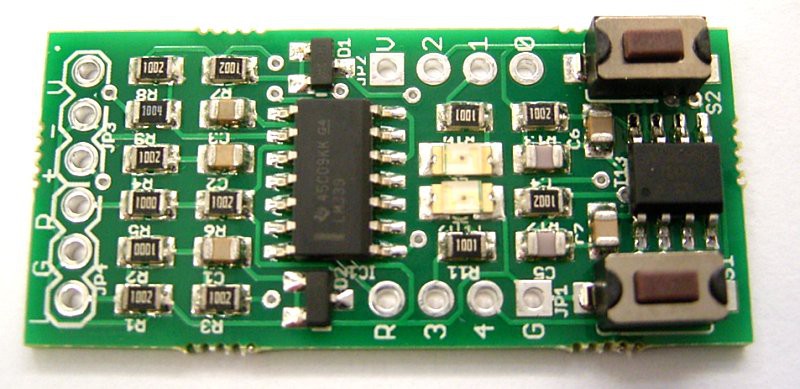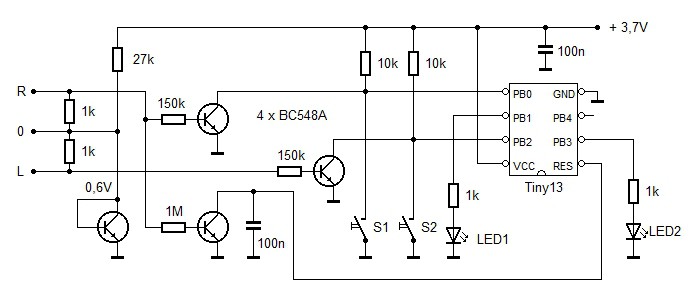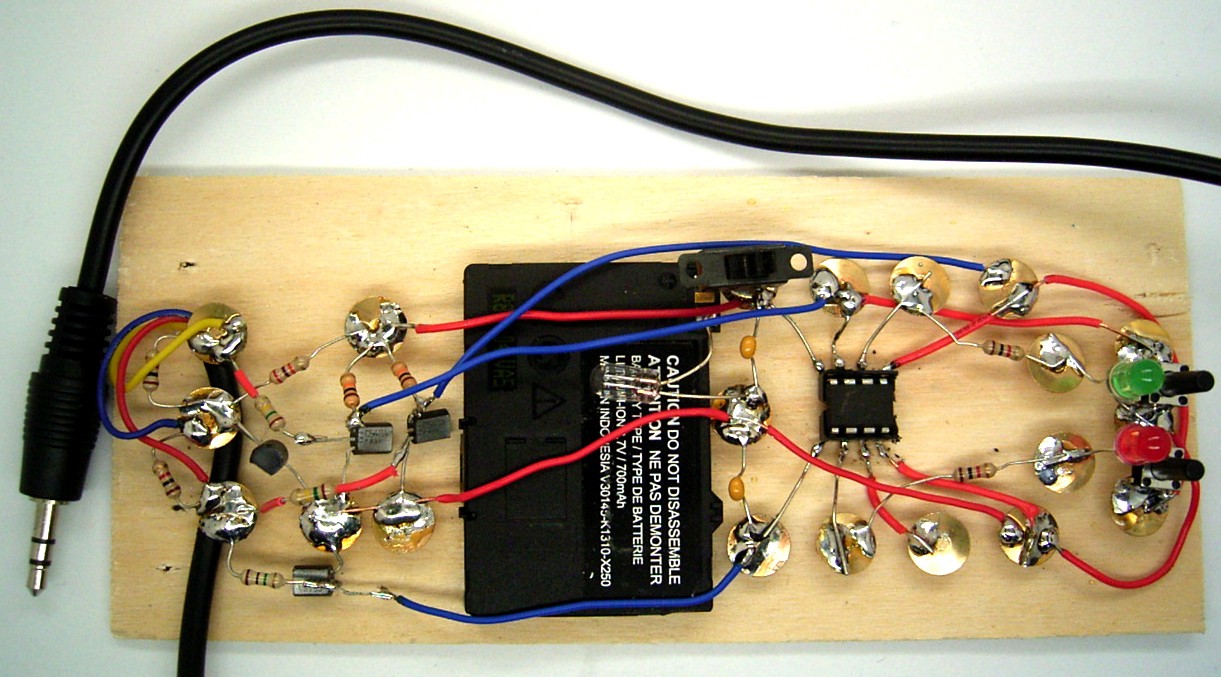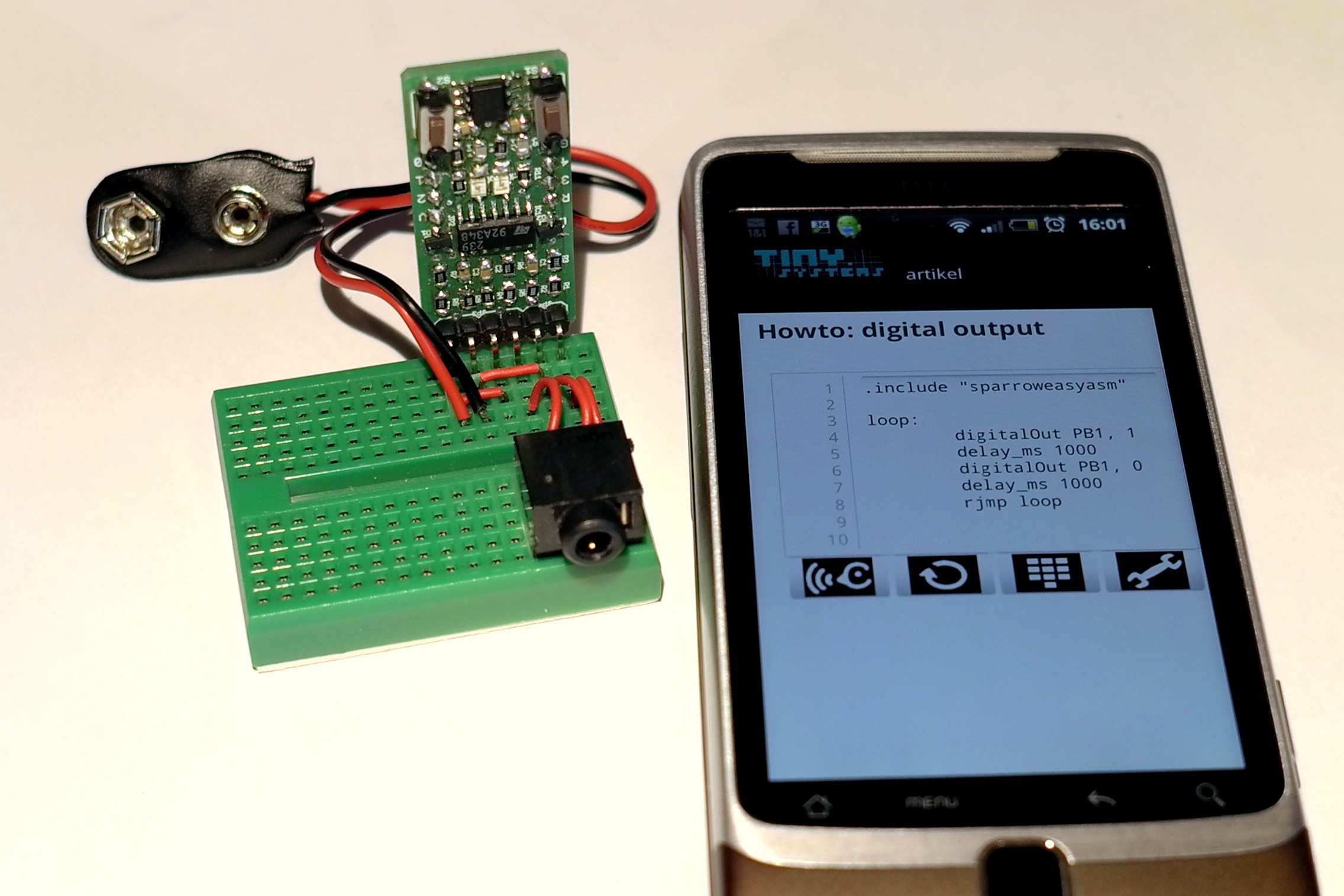The Sparrow - a very small DIY Dev Board
The "Sparrow" is a cloud-based microcontroller system with an ATtiny13A. Programming is done via the stereo signal from the headphone jack of any mobile device.

The Hawk - Next Generation Prototype

How it works
Apps can be downloaded from the internet and directly uploaded to the controller using a browser that supports HTML5 AudioTags. If you want to develop your own programs there is an online assembler or an online C compiler.
The stereo signal represents the normal ISP-Interface. There is no bootloader.
Why use the audio jack?
Joint development and the community spirit stands in the foreground. No one should be excluded. With the advanced technology of the programming via the audio jack the integration with social networking is a breeze. Apps can easily be shared by Sound or simply be embedded into a video. In addition, there is no mobile device without a headphone output.
App Collection and Programming
There is a small App Collection with more than 60 Apps. (german)
Some cool things you can do with a Sparrow
Integrating RF LED Detector (How can I make the simplest possible RF receiver)
Development tools
- Online Assembler SparrowASM
- HEX2Wave Converter HEX2Wave (any .hex file for the ATtiny13a)
- Fuse Editor Sparrow Fuse Editor
- Experimental C Compiler Sparrow C Compiler
The Cheepit Product Family
Several products are in advanced stages of development or in process of planing.
- The Sparrow - mini dev board with an ATtiny13a (prototype status)
- The Hawk - midi dev board with LCD and ATtiny261a (concept)
- The Nightingale - cheepit based ISP-Programmer (vision)
- The Hummingbird - dil breakout board with an audio jack (vision for a new concept: "hardware as an app")
Howto Online Assembler
The Online Assembler is a web service that compile and convert your programm in one step. The listing shows a simple blink example. For an easy entrance you can use an API with essential macros for digital Output, digital Input, delay, blink LEDs, uart, pwm, ...

How to build your own Sparrow - A Sparrow from the scrap
Normally the Cheepit Sparrow is a little PCB with an ATtiny13 microcontroller and a comparator LM339. But once you understand how it works you can build it much simpler. Just use some parts from the scrap. I found a piece of a wooden board that originated from a fruit box and some thumb tags to hold the parts. The battery is from an old mobile phone, much too weak to power the phone but doing well for the sparrow. I added a little bulb rating 6 V, 100 mA serving as a fuse. So everything is safe even in case if a short. The power switch is taken from an old toy. And the audio cable is from the scrap. All the other parts could be found in the junk box, four transistors BC548A, two LEDs, two momentary switches and a few resistors and capacitors. The most expensive part was the ATtiny13, less than one dollar?
On the right you can see the microcontroller with the two LEDs and switches. Left of the battery there is the little programming interface using four transistors. Its directly connected to the audio cable. And this is the circuit diagram.

The Tiny13 section with switches and LEDs equals the one in the original Sparrow. But the programing interface looks completely different. No special parts, only some transistors and resistors. All signals are inverted like with the Sparrow. When you use simple bipolar Transistors, you normally need more than 0.6 V to bring them into the conducting state. But here a bias of 0.6 V is made by the first transistor. So you need only small signals from the audio. The bias is even temperature compensated so it will work fine from Alaska to Africa. If you happen to have transistors with higher current gain like BC547B or BC547C you should use larger base resistors. The collector voltage should be close to VCC in the idle state.
One thing has to be noticed. The signal ground of the audio interface is different to the signal ground GND of the microcontroller. There is a voltage of 0.6 V between the two. In most cases this is not a real problem since either the phone or the controller or even both of them are floating and not connected to earth.
Another thing is you have to play around a bit to find the best volume level. The real Sparrow works in a wide range of levels and can even deal with some amount of distortion. This simple circuit needs medium voltages. Just try it. It's one of the simplest ways to program a microcontroller.

 Thomas Baum
Thomas Baum